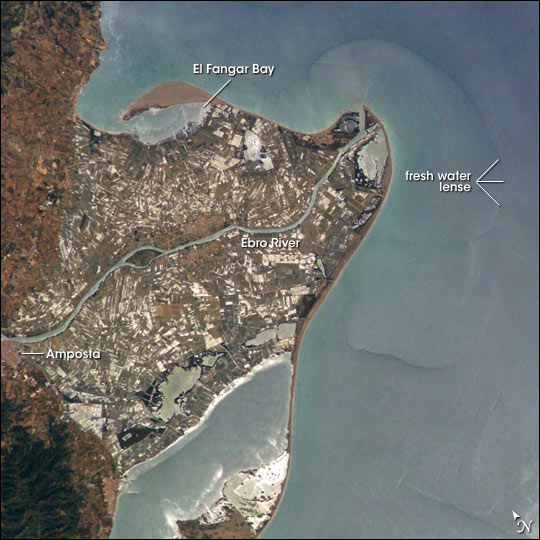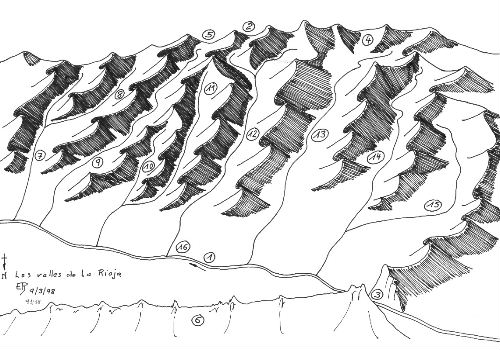|
Alhama (river)
The Alhama is a tributary of the Ebro. Its source is Suellacabras, in Soria, and it flows for until it reaches the Ebro at Alfaro (La Rioja La Rioja () is an autonomous communities in Spain, autonomous community and provinces of Spain, province in Spain, in the north of the Iberian Peninsula. Its capital is Logroño. Other List of municipalities in La Rioja, cities and towns in the ...). See also * List of rivers of Spain Rivers of Spain Rivers of La Rioja (Spain) Rivers of Castile and León {{Spain-river-stub ... [...More Info...] [...Related Items...] OR: [Wikipedia] [Google] [Baidu] |
Tributary
A tributary, or an ''affluent'', is a stream or river that flows into a larger stream (''main stem'' or ''"parent"''), river, or a lake. A tributary does not flow directly into a sea or ocean. Tributaries, and the main stem river into which they flow, drain the surrounding drainage basin of its surface water and groundwater, leading the water out into an ocean, another river, or into an endorheic basin. The Irtysh is a chief tributary of the Ob (river), Ob river and is also the longest tributary river in the world with a length of . The Madeira River is the largest tributary river by volume in the world with an average discharge of . A confluence, where two or more bodies of water meet, usually refers to the joining of tributaries. The opposite to a tributary is a distributary, a river or stream that branches off from and flows away from the main stream. [...More Info...] [...Related Items...] OR: [Wikipedia] [Google] [Baidu] |
Ebro
The Ebro (Spanish and Basque ; , , ) is a river of the north and northeast of the Iberian Peninsula, in Spain. It rises in Cantabria and flows , almost entirely in an east-southeast direction. It flows into the Mediterranean Sea, forming a delta in the Terres de l'Ebre region, in southern Catalonia. In the Iberian peninsula, it ranks second in length after the Tagus and second in discharge volume, and drainage basin, after the Douro. It is the longest river entirely within Spain; the other two mentioned flow into Portugal. The Ebro flows through many cities (): Reinosa in Cantabria; Frías and Miranda de Ebro in Castile and León; Haro, Logroño, Calahorra, and Alfaro in La Rioja; Tudela in Navarre; Alagón, Utebo, and Zaragoza in Aragon; and Flix, Móra d'Ebre, Benifallet, Tivenys, Xerta, Aldover, Tortosa, and Amposta in the province of Tarragona (Catalonia). Geography Upper part and tributaries The source of the river Ebro is in the Cantabrian Moun ... [...More Info...] [...Related Items...] OR: [Wikipedia] [Google] [Baidu] |
Suellacabras
Suellacabras is a small Spanish town and municipality, located in the province of Soria, part of the autonomous community of Castile and León Castile and León is an Autonomous communities of Spain, autonomous community in northwestern Spain. Castile and León is the largest autonomous community in Spain by area, covering 94,222 km2. It is, however, sparsely populated, with a pop .... It is located in the mountain range known as . The most important attraction is the church of San Caprasio. In the municipality is included the village El Espino, with the romanesque church of San Benito and two hermitages: Virgen del Espinar and San Román (gothic, ruins). References Municipalities in the Province of Soria {{Soria-geo-stub ... [...More Info...] [...Related Items...] OR: [Wikipedia] [Google] [Baidu] |
Soria (province)
Soria is a province of central Spain, in the eastern part of the autonomous community of Castile and León. Most of the province is in the mountainous Sistema Ibérico area. Demographics It is bordered by the provinces of La Rioja, Zaragoza, Guadalajara, Segovia, and Burgos. Soria is the least populous of all of Spain's provinces, with a density of around 9 inhabitants/km2—one of the lowest in the European Union. The average population density of provinces in Spain and European Union are 83.6 and 116 inhabitants per square km respectively. In comparison, the Soria province is less dense than some northern parts of the Nordic countries. Of the province's population of 91,487 (2002), nearly 40% live in the capital, Soria. 26.7% of its population was above 65 years of age while the nation's average is 16.9%. There are 183 municipalities in Soria, of which nearly half are hamlets of under 100 people and of which only 12 have more than 1,000 people. The cathedral town of the p ... [...More Info...] [...Related Items...] OR: [Wikipedia] [Google] [Baidu] |
Alfaro, La Rioja
Alfaro is a town and municipality in La Rioja, northern Spain. Its population in January 2009 was 9,883 inhabitants, and its area is 194.23 km2. It is known for the annual return and nesting of the 'Storks of Alfaro.' During ancient Roman In modern historiography, ancient Rome is the Roman people, Roman civilisation from the founding of Rome, founding of the Italian city of Rome in the 8th century BC to the Fall of the Western Roman Empire, collapse of the Western Roman Em ... times, Alfaro was a municipium known as Graccuris; named after Tiberius Sempronius Gracchus. Politics Landmarks *Collegiate of San Miguel Arcángel, Alfaro *Church of Nuestra Señora del Burgo *Plaza de Toros de Alfaro Festivals Festival dates in Alfaro: * Storks Day - during the first weekend in February * San Isidro—Spring Festival - May 15 * San Roque—Summer Festival - August 14 * Holy Mary Burgo—September Festival - September 9 Gallery File:Alfaro-Ninfeo.JPG, Roman Nymp ... [...More Info...] [...Related Items...] OR: [Wikipedia] [Google] [Baidu] |
La Rioja (Spain)
La Rioja () is an autonomous community and province in Spain, in the north of the Iberian Peninsula. Its capital is Logroño. Other cities and towns in the province include Calahorra, Arnedo, Alfaro, Haro, Santo Domingo de la Calzada, and Nájera. It has an estimated population of 315,675 inhabitants (INE 2018), making it the least populated autonomous community of Spain. It covers part of the Ebro valley towards its north and the Iberian Range in the south. The community is a single province, so there is no provincial deputation, and it is organized into 174 municipalities. It borders the Basque Country (province of Álava) to the north, Navarre to the northeast, Aragón to the southeast ( province of Zaragoza), and Castilla y León to the west and south (provinces of Burgos and Soria). The area was once occupied by pre-Roman Berones, Pellendones and Vascones. After partial recapture from the Muslims in the early tenth century, the region became part of the Kingd ... [...More Info...] [...Related Items...] OR: [Wikipedia] [Google] [Baidu] |
List Of Rivers Of Spain
This is an incomplete list of rivers that are at least partially in Spain. The rivers flowing into the sea are sorted along the coast. Rivers flowing into other rivers are listed by the rivers they flow into. Rivers in the mainland Iberian Peninsula can be divided into those belonging to the Mediterranean watershed, those flowing into the Atlantic Ocean and those emptying into the Cantabrian sea (a marginal sea of the Atlantic off the northern coast of the Iberian peninsula). Tributaries are listed down the page in an downstream direction. The main stem river of a catchment is labelled as , left-bank tributaries are indicated by , right-bank tributaries by . Where a named river derives from the confluence of two differently named rivers these are labelled as and for the left and right forks (the rivers on the left and right, relative to an observer facing downstream). The transboundary rivers partially running through Portugal or France and/or along the borders of Spain with t ... [...More Info...] [...Related Items...] OR: [Wikipedia] [Google] [Baidu] |
Rivers Of La Rioja (Spain)
A river is a natural stream of fresh water that flows on land or inside caves towards another body of water at a lower elevation, such as an ocean, lake, or another river. A river may run dry before reaching the end of its course if it runs out of water, or only flow during certain seasons. Rivers are regulated by the water cycle, the processes by which water moves around the Earth. Water first enters rivers through precipitation, whether from rainfall, the runoff of water down a slope, the melting of glaciers or snow, or seepage from aquifers beneath the surface of the Earth. Rivers flow in channeled watercourses and merge in confluences to form drainage basins, or catchments, areas where surface water eventually flows to a common outlet. Rivers have a great effect on the landscape around them. They may regularly overflow their banks and flood the surrounding area, spreading nutrients to the surrounding area. Sediment or alluvium carried by rivers shapes the landscape a ... [...More Info...] [...Related Items...] OR: [Wikipedia] [Google] [Baidu] |



